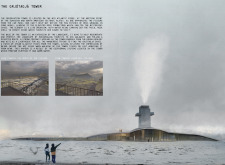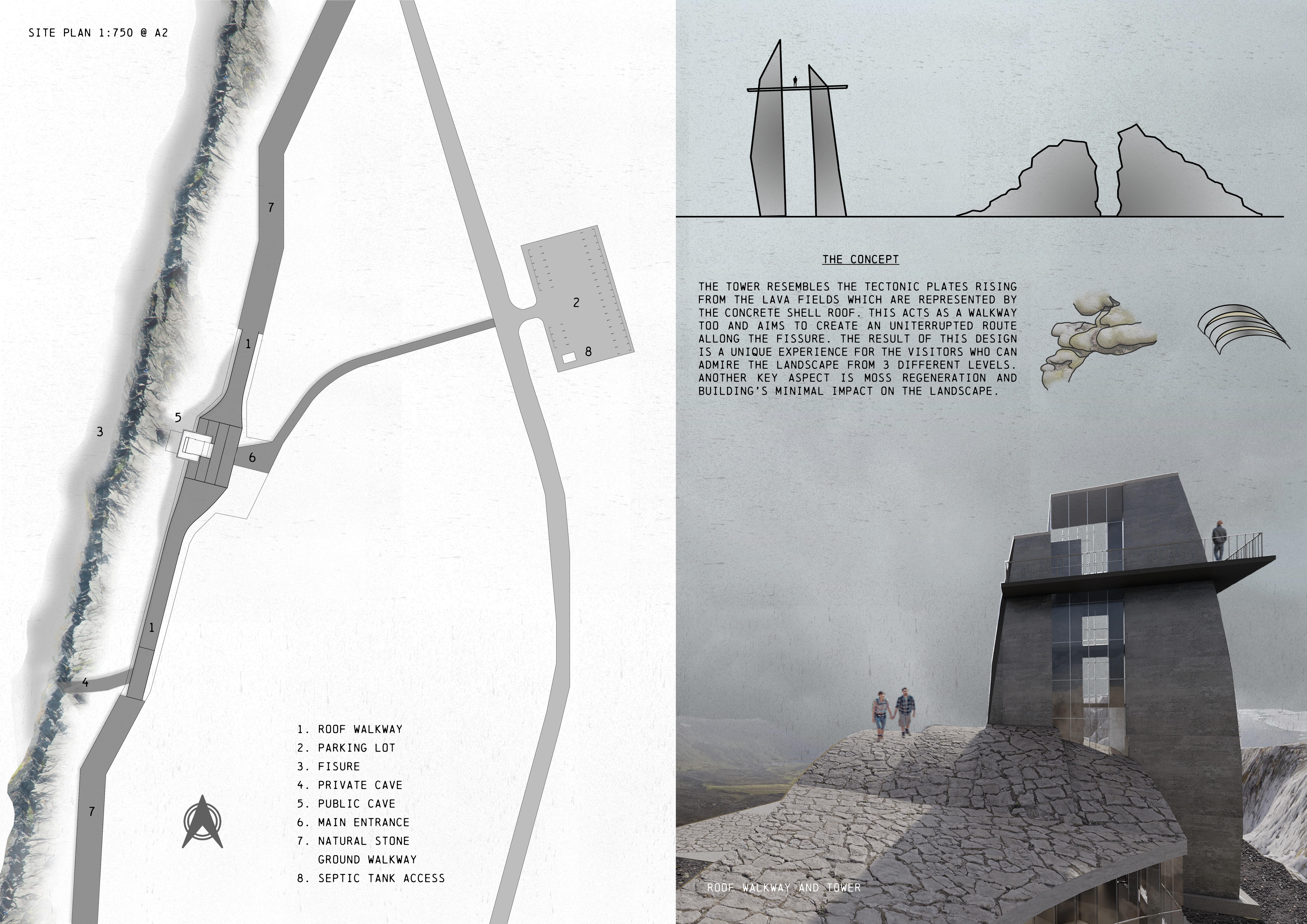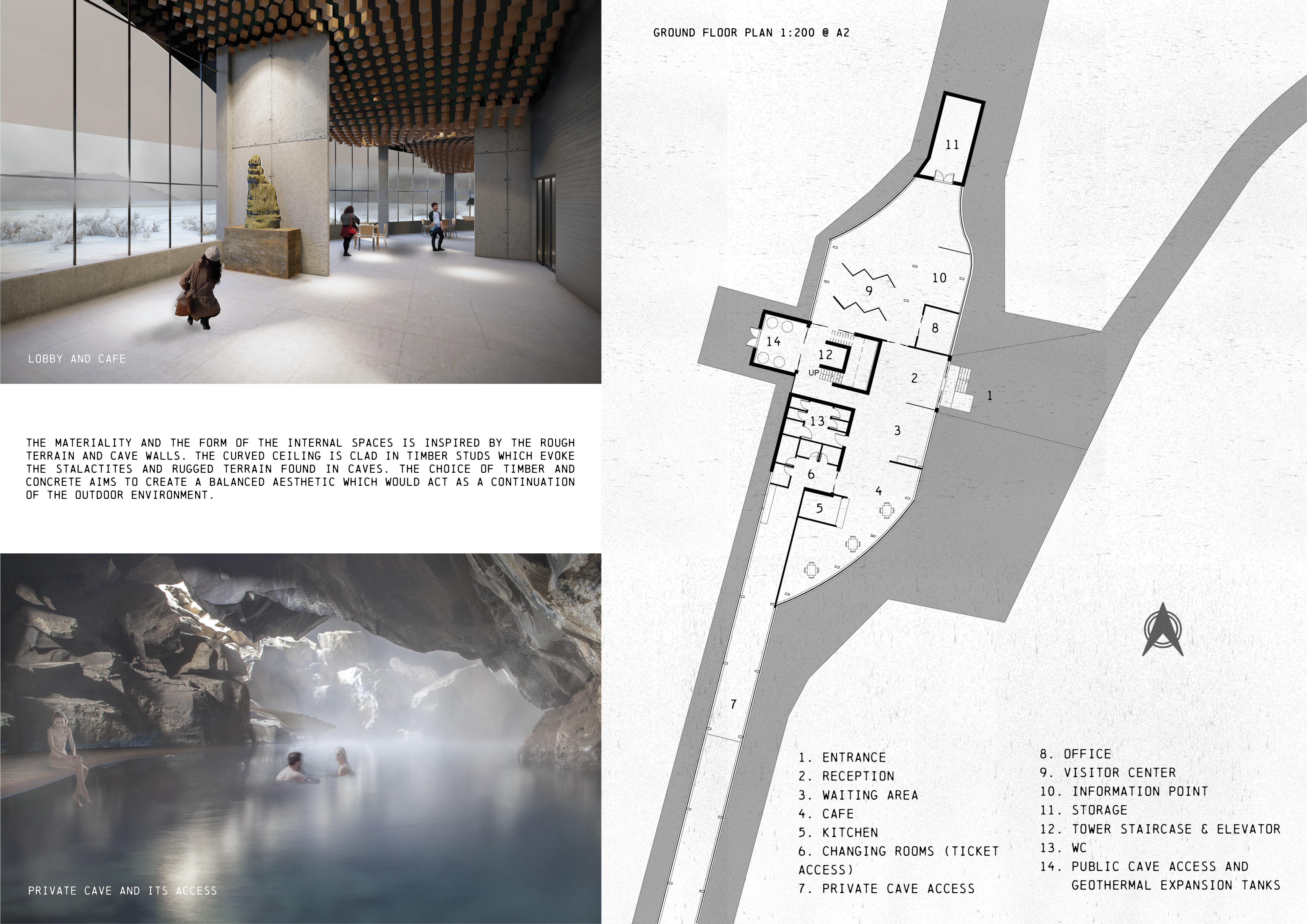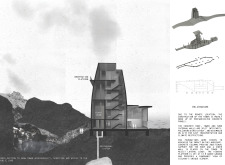5 key facts about this project
The Grjótagjá Tower stands in a unique geological location where the Eurasian and North American tectonic plates meet. This structure serves an important function as an observation tower and visitor center, designed to help people explore the stunning geothermal features and caves in the surrounding area. Taking inspiration from the natural landscape, the tower fits well within its rugged environment and invites visitors to enjoy a series of elevated viewpoints.
Architecture Concept
The design of the Grjótagjá Tower creates a connection between the building and the landscape. The roof resembles the shapes of tectonic plates rising from the earth, creating a continuous walkway along the fissure. This design encourages visitors to engage with their surroundings, allowing them to appreciate the unique geological formations from various angles.
Materials and Structure
The tower is built mostly from prefabricated concrete panels, which reflects a practical approach to construction in a remote area. These panels are organized in a grid layout, making on-site assembly easier while addressing transportation challenges. The structure is supported by pad foundations that help limit environmental disruption. Concrete columns provide stability without dominating the visual landscape.
Interior Spaces
Inside, the lobby and cafe areas reflect the rough and natural characteristics of the nearby terrain. The curved ceilings evoke the shapes found in caves, creating an inviting atmosphere that ties the interior to the building's external environment. This careful design enhances the visitor experience and reinforces the connection between the building and the landscape.
Geothermal Integration
Geothermal systems are a key feature of the tower, serving multiple functions while promoting sustainability. These systems provide electricity and warm water, while steam rising from the building adds a unique visual element. This steam complements the overall design and strengthens the connection between the architecture and the geothermal activity present in the area. Visitors experience a tangible link to the natural forces that shape the environment around them.






















































